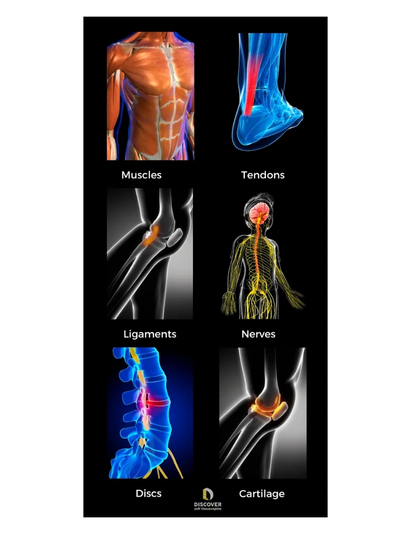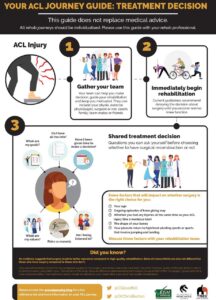Physical Address
304 North Cardinal St.
Dorchester Center, MA 02124

Shockwave therapy can cause some discomfort during treatment, but the level of pain varies from person to person. Shockwave therapy is a non-invasive treatment that utilizes high-energy sound waves to stimulate healing in affected areas.
While it is generally considered safe and well-tolerated, many patients wonder if it is painful. The answer is that there can be some discomfort experienced during the treatment, although the level of pain varies from person to person. We will explore the factors that contribute to the potential pain of shockwave therapy and discuss ways to minimize discomfort during the procedure.
Whether you’re considering shockwave therapy or simply curious about the pain level associated with this treatment, this article will provide you with the information you need.

Credit: discoversofttissue.com
Shockwave therapy is a non-invasive treatment that uses acoustic wave energy to stimulate healing in damaged tissues. Many patients report feeling mild discomfort during the procedure, but the sensation is tolerable and short-lived. Overall, the therapy does not inflict significant pain and is generally well-tolerated by patients.
Shockwave therapy is a non-invasive treatment option that utilizes high-energy sound waves to promote healing and relieve pain. This therapy is known for its effectiveness in treating a range of musculoskeletal conditions, including tendinitis, bursitis, plantar fasciitis, and more. The underlying concept behind shockwave therapy is to stimulate the body’s natural healing mechanisms by increasing blood flow and stimulating the release of growth factors. So, how does shockwave therapy work exactly?
During the treatment, a specialized handheld device emits high-pressure sound waves that are directed toward the affected area. These sound waves create microtrauma in the tissue, triggering an inflammatory response. This inflammatory response then encourages the body to send more blood to the area, promoting the healing process. Additionally, shockwave therapy can break down calcification or scar tissue, which can be contributing factors to pain and dysfunction.
Shockwave therapy has proven to be highly beneficial in treating a wide range of musculoskeletal conditions. Here are some of the common conditions that shockwave therapy can effectively address:
1. Plantar Fasciitis: Shockwave therapy can help alleviate the pain and inflammation associated with plantar fasciitis, a condition characterized by heel pain.
2. Tendinopathy: Whether it’s Achilles tendinopathy, patellar tendinopathy, or tennis elbow, shockwave therapy can provide relief and promote healing in affected tendons.
3. Bursitis: By reducing inflammation and promoting circulation, shockwave therapy can mitigate the symptoms of bursitis in various joints, such as the shoulder, elbow, or hip.
4. Frozen Shoulder: This condition, characterized by shoulder pain and limited mobility, can be effectively treated with shockwave therapy to relieve pain and improve joint range of motion.
5. Tennis and Golfer’s Elbow: Shockwave therapy targets the affected tendons in the elbow region, reducing pain and promoting healing in these common overuse injuries.
6. Shin Splints: Shockwave therapy can help alleviate the pain and inflammation associated with shin splints, a common overuse injury among runners and athletes.
Shockwave therapy is a versatile treatment option that can be beneficial for both acute and chronic conditions. While the number of treatment sessions may vary depending on the specific condition and individual response, many patients experience significant pain relief and improved functionality after just a few sessions.
In conclusion, shockwave therapy harnesses the power of sound waves to stimulate the body’s natural healing processes in order to alleviate pain and promote tissue repair. This non-invasive treatment option has been proven effective in treating various musculoskeletal conditions, from plantar fasciitis to tendinopathy. So, if you’re suffering from any of the conditions mentioned above, shockwave therapy might be a viable option for you.

Credit: discoversofttissue.com
When considering any medical procedure, pain is often a significant concern for patients. With shockwave therapy, it’s natural to wonder if the treatment will be painful. In this blog post, we dive into the pain factor associated with shockwave therapy, addressing the pain during the procedure and any post-treatment discomfort.
During shockwave therapy, some individuals may experience mild discomfort. It’s important to note that the levels of pain vary depending on the individual’s pain tolerance. The treatment involves the application of targeted shockwaves to the affected area, promoting healing and reducing pain.
Although the procedure might sound intimidating, it is generally well-tolerated by patients. Most describe the sensation as a moderate level of pressure or mild pinching, similar to a deep tissue massage. However, it is crucial to communicate openly with your therapist if you experience any discomfort during the session. They can adjust the intensity levels to ensure your comfort.
Following shockwave therapy, some individuals may experience temporary post-treatment discomfort. This discomfort can range from mild soreness to a slight increase in pain in the treated area. These sensations are considered normal and generally subside within a few hours or days.
It’s important to keep in mind that everyone’s healing process is unique, and while some patients may experience immediate relief, others may require multiple sessions before noticing significant improvements. The post-treatment discomfort is a positive sign that your body is responding to the therapy and initiating the healing process.
Throughout the recovery period, it is recommended to follow any post-treatment guidelines provided by your therapist. These may include avoiding strenuous activities and applying ice or heat to the treated area to reduce discomfort. Properly managing your post-treatment discomfort will help optimize your healing process and ensure optimal results from shockwave therapy.
Is Shockwave Therapy Effective?
Shockwave therapy is a non-invasive treatment that has gained popularity for its potential to alleviate various musculoskeletal conditions. Here, we delve into the effectiveness of shockwave therapy, shedding light on research findings and patient testimonials.
Studies have shown promising results regarding the effectiveness of shockwave therapy. Research published in medical journals has indicated the positive impact of shockwave therapy on conditions such as plantar fasciitis, tendinitis, and calcific shoulder tendinopathy. Clinical trials have demonstrated notable improvements in pain relief, range of motion, and overall function.
Real-life experiences of patients undergoing shockwave therapy provide valuable insights into its effectiveness. Numerous individuals have reported significant pain reduction and enhanced mobility following a course of shockwave treatments. Patient testimonials consistently laud the therapy for its ability to facilitate a quicker return to daily activities and improved quality of life.
Shockwave therapy vs other treatments in pain level
Shockwave therapy can cause some discomfort, but there are ways to minimize it. Here are some tips to help you manage any pain or discomfort you may experience during or after the treatment:
Shock wave therapy can cause discomfort, but the level of pain varies for each individual. Some may experience mild discomfort, while others may feel more intense sensations. It’s important to communicate with your healthcare provider to manage any discomfort during the treatment process.
After shockwave therapy, you may experience some discomfort and inflammation, but these side effects are temporary. Most patients find relief from pain and improved mobility within a few days. It is essential to follow post-treatment instructions provided by your healthcare professional for optimal results.
Common side effects of shock wave therapy may include temporary pain, bruising, swelling, numbness, or tingling. These effects usually subside within a few days.
Shockwave therapy typically starts providing relief within a few sessions, but full results may take several weeks.
While shockwave therapy may cause some discomfort, its benefits in treating various conditions make it worth considering. It’s essential to discuss any concerns with a healthcare provider before proceeding with the treatment. Understanding the potential effects and outcomes will help ensure a positive experience with shockwave therapy.

